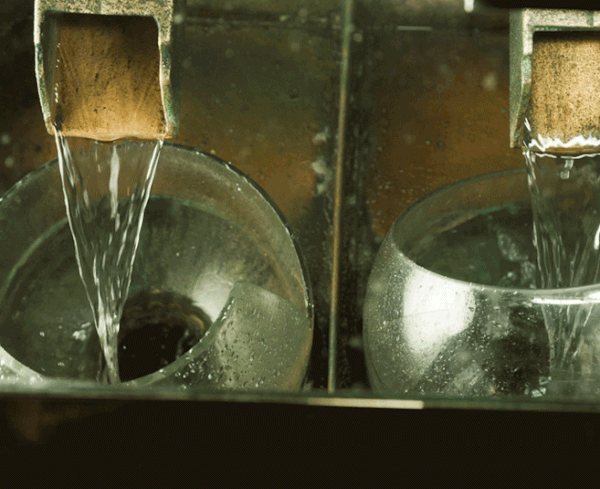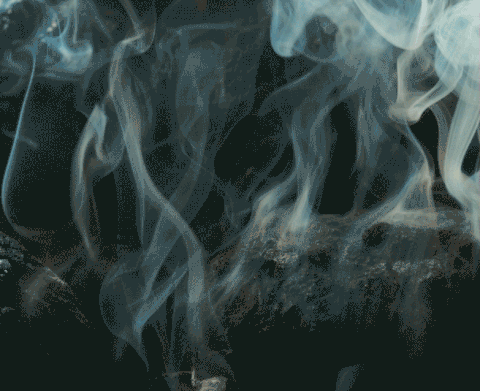Y’know that saying “the only constant is change”? It kinda applies to whiskies as well. Distilleries are constantly evolving in their bid to flourish; rebranding exercises are actually a relatively common occurrence. These can range from the superficial, in the form of new clothes (or otherwise packaging) or something much more existential, with a complete overhaul of the whisky’s formulations and characteristics.
What is far less common is a successful rebranding. Something like the one Benriach is in the midst of right now.

The new Benriach core range, with the Smoke Season being a small batch bottling. (Image Source: Forbes)
Benriach is no stranger to the world of whiskies, having been around since the late 19th Century. The name Benriach itself originated from its founder having broken ground for the new distillery on a small hill, or “Ben”, at the site of an old farm, a “Riach”.
Yet if you’ve existed for over a hundred years, well, some refreshing seems about right. After all, palates have certainly evolved with the ever expanding vocabulary of sights, sounds, and of course, taste.
Let’s take a deeper look at how Benriach has managed to so successfully re-establish their identity and shall we say, find its spirit.
The Bottle

Bottle Stats
Distillery: Benriach | Brand: Benriach |
Region: Speyside, Scotland | Status: Active |
Distributor: Original Bottling (OB) | Classification: Malt Whisky |
Style: Single Malt Scotch | Cask: First-Fill ex-Bourbon Barrels and American Virgin Oak |
Age: NAS | Abv: 52.8% |
Behind the Label
Benriach was established at a time when whisky was the literal boom town but shortly thereafter, it fell victim to a big whisky recession when whiskies were overproduced and prices naturally plummeted.
Yet Benriach had found a way to survive, by providing floor malting services to neighbouring Longmorn Distillery. Floor malting being the laborious task of spreading germinating barley across the floor to allow for more rustic and even malting. This practice is believed to give whiskies a more robust and intense flavour but alas is rarely done today (with the few exceptions being Springbank Distillery and Chichibu Distillery).

Floor malting is an incredibly laborious effort to spread out barley across the floor for germination. This creates a more robust intense flavor. (Image Source: Whisky Intelligence)
This alone was sufficient to keep Benriach alive.
Over the next few decades, Benriach was eventually reopen for business, producing their own whiskies and became increasingly valuable, changing hands from the likes of Glenlivet to Seagrams, now belonging to Brown-Forman of Jack Daniel’s fame.
Now, Benriach is no run-of-the-mill distillery mind you. Though they have operated in varying capacities over the last century, they have had a streak of innovation.

Benriach is one of the few Scotch distilleries to use triple distillation to create a smoother whisky. (Image Source: Benriach)
Apart from floor maltings, the distillery has also toyed with various styles of whisky production, from using Highland peat, to producing a triple-distilled spirit (a style typically used only by Irish distilleries and is what makes whiskies fruitier), and also the use of a wide range of unique casks for maturation.
Since its 2020 rebranding, Benriach has focused on showcasing these unique practices through a slew of seasonal releases.

Benriach is located in the Speyside region, right in the heart of the Scottish Highlands, where peat is wildly different and much less characteristic of the region. (Image Source: Tomoka Spirits Boutique)
Certainly peated whiskies are nothing to shout about, there are more than a handful of them particularly in the Islay region of Scotland, where the smokier peaty style is famous. Yet Benriach belongs to the Speyside, in the Scottish Highlands, where peated whiskies are less synonymous with the area. There is some rationale to this, given that Islay is abundant with peat, being a wet, boggy isle. In the Highlands, peat is not so much of a natural occurrence.
As such, what Highland peat there is, is much more scarce hence you don’t see this style often with distilleries of the region. But more than that, Highland peat and Islay peat is fundamentally different.

Highland peat is noticeably more earthy, less medicinal compared to Islay peat as it contains more plant-matter. (Image Source: Research Gate)
Highland peat tends to be more earthy, umami and rich from the increased plant-based matter and heather the makes up its composition. This is significantly different from Islay peat which is features much more salinity given its proximity to the sea, as well as flavors closer to kombu and iodine as a result of seaweed and coastal matter that goes into the peat.
With Benriach’s Smoke Season designed to showcase its use of Highland peat, we were always gonna be in for a treat. Keep in mind this style of using malted barley smoked with Highland peat dates back to the 19th Century and Benriach basically does this once a year for a small batch release.

The old Benriach bottlings. (Image Source: Benriach)
We expect this will allow us to savor a much sweeter, woody, smoked profile rather than a sharper, more medicinal flavour synonymous with Islay whiskies. Basically much more aromatic and fragrant but also very authentic.
Tasting Notes
Colour. Amber, a really nice deep autumn tone.
On the nose. Off to a solid start! The nose is certainly distinctive and fragrant. The smokiness is what sticks out first, but wait; this isn’t your typical herby balmy smoke, it’s a lot sweeter, kind of like char siu (no not you @charsiucharlie, you wish you smelt that good). It’s a meaty sweet smoke that you get with a good depth to it. Teriyaki glaze is probably close by as well.

A Cantonese staple, char siu is a sweet glazed BBQ pork tender. (Image Source: Madewithlau.com)
There’s also a distinctive malty quality to it as well, almost like butter biscuits with some dried fruit jam; very much like Marks and Spencer’s Redcurrant All Butter Puffs. Have you tried it? Absolutely love it. Light tartness to it as well, again like the redcurrant jam that cuts through the butter puffs. Otherwise crunchy green apples and perhaps a touch of lemon meringue or lemon curd.

These puffs are just the best, that mix of buttery oiliness contrasted with the tart redcurrant jam made for a perfect snack. (Image Source: Lazada)
The smoke continues is wafts, interspersing fruits and ash. The ash has an umami texture to it, with a scent like burnt lavender and abit of brininess too of kombu. A little peppery if you nose it several times but really no bitterness or medicinal notes to be found. That’s nice, this fruity smoke.
The palate. Very big on the body, if it stood out on the nose, boy does it stand out on the palate. The first notes that hits are the bright zesty citric notes; lemon, grapefruit, green apples. Comes with that leftover pepper from the nose, that prickle is definitely distinctive.

A fruit basket greets you on the palate, full-bodied and full-flavored. (Image Source: Epicurious)
But that gives way to that characteristic Benriach fruit basket, with a wave of sweet ripe fruits, red apple, pineapples, some mangoes even. This is tempered with some sweet bread dough; almost like doughnuts even. Kinda makes me think of the Krispy Kreme I had yesterday.

Y'know that first bite into a Krispy Kreme, where the dough reflates itself and releases a waft of malty bready aroma? (Image Source: Postmates)
The smokiness is present throughout. The ashy-ness just seems alittle like the slightly burnt ends of a pizza crust. Which come to think of it, the sweet dough really does remind me of pizza crust too.

The burnt bready crust of a pizza also sums it up. (Image Source: Home Cook World)
The finish is very long. There’s a drying quality to it as it fades out, I suppose this is the oak from the double cask-ing. There’s also a little chalkiness with it as well. Coupled with the sweetness it is somewhat like cinnamon breadsticks. The smokiness still remains, very warming and comforting. Remnants of milk chocolate and a mocha finishes it off. Else, it could just as well be churros with a nice milk chocolate dip.

The combination of cinnamon on bread coupled with a chocolate dip makes for a delicious finish. (Image Source: Just a Taste)
My take
Altogether a lovely dram! Very big on the mouth that makes it very distinctive; it is the kind of whisky that stands out in a tasting line up. The smokiness is sweet rather than menthol and balmy, which personally I am not a huge fan of the medicinal sort of peat. I have a bit of sweet tooth when it comes to this. This is really the highlight because with Smoke Season it is all about showcasing the Highland peat, that is what you are really here for.

The smoulder of the Highland peat is remarkably wonderful for those who don't usually like medicinal peaty whiskies. It is sweet and umami with little bitterness. Benriach brought back Smoke Season as a small batch only expression to celebrate its heritage.
But don’t worry it doesn’t get too sweet though, it is not by any means syrupy. That much is balanced out by the smoke and the oak-y dryness that keeps it in check.
The fruitiness is lovely as well, I love whiskies that are a big fruit basket, and this one delivers lots of grilled fruits so I really appreciate that. The body of the whisky is also of a highly respectable mouthfeel and is almost chewy, which is again what really makes this stand out.

Sweet and savory, this complex whisky is almost chewy and meaty with a good bite. (Image Source: Olivia's Kitchen)
It’s almost like a Mediterranean mezze platter coupled with a bunch of lamb kebabs. It’s smokey sweet grilled fruits but also meaty and savory. Just absolutely wonderful complex dram.
Our Rating | 🥓 🥓Smoke Season was really interesting and tied very well to the distillery's history, also a rare chance for us to try some Highland peat at work, rather than the usual Islay peat. This gets a solid score of two bacons. |



